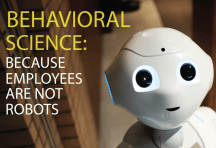 We live in an ever-shifting world. The corporate environment is not immune to this evolution, nor should it be. As such; the processes and strategies that impact the human element of all organizations, it’s employees, must ebb and flow with this shifting tide.
We live in an ever-shifting world. The corporate environment is not immune to this evolution, nor should it be. As such; the processes and strategies that impact the human element of all organizations, it’s employees, must ebb and flow with this shifting tide.
Progress and improvement come from change and adaptation to change. There are speed bumps, there are steps backward: these are all part of the process.
Embedded throughout these organizational processes are employee communications. Employee communications must stay current and ahead of the curve.
So, what does this mean? What is the future of employee communication? There is no simple concrete answer, it is a recipe of factors. It involves adapting, engaging, and reacting to the revolving elements of influence that impact the corporate environment. While the list is large let’s focus on 3 of the big ones:
- New Generations
- New Technologies
- New Sciences
New Generations
Every generation is unique, we are each the product of the generation before us and the influences that surround us – see new technologies and sciences below. At the forefront of tod ay’s shift is the millennial generation. With the onset of new motivators, new lifestyles, and new career goals; communications must react. The status quo simply is not enough. Here are some quick tips on breaking through to your millennial employees:
ay’s shift is the millennial generation. With the onset of new motivators, new lifestyles, and new career goals; communications must react. The status quo simply is not enough. Here are some quick tips on breaking through to your millennial employees:
- Make it mobile. We live on our phones (but we no longer make phone calls).
- Get to the point. In the era of texting and Twitter, reducing cognitive load plays an important role. Read more on the subject here.
- Be open. Check out this fun infographic by 15five on how open communication impacts millennials.
New Technologies
Technology has made us more connected than ever. Social media, smartphones, 24-hour connectivity.
A result of this is that we flooded every day with more communications than we could ever have time for – not just from work, but from family, friends, advertisements, social media, and much more. As such, if a communication is not immediately identifiable, it will be overlooked. Communications need to immediately identify who they are from, what they are about, and the level of urgency or action that is required from the audience. With this in mind communications should be:
- Mobile ready (see generation above)
- Easy to respond to – if it’s too time-consuming it will get lost in the flood.
- Immediately identifiable to the audience. Do I need to reply? Can it wait? Is it more important than my current task?
New Sciences
Remember – employees are not robots. Employees cannot be programmed with a n algorithm to drive performance, BUT we are built on a series of complex, somewhat mysterious, irrational drives. These drives can be tapped into to improve both the needs of the organization and the needs of the individual. We need to be constantly adapting to the environmental shifts, the evolution of human motivation, to mitigate negative push-back, to be ahead of the loss aversion that comes from necessary organizational decisions. Behavioral insights are the key drivers to these successes.
n algorithm to drive performance, BUT we are built on a series of complex, somewhat mysterious, irrational drives. These drives can be tapped into to improve both the needs of the organization and the needs of the individual. We need to be constantly adapting to the environmental shifts, the evolution of human motivation, to mitigate negative push-back, to be ahead of the loss aversion that comes from necessary organizational decisions. Behavioral insights are the key drivers to these successes.
Read more here on how to implement these insights into your employee communications.
Effective communications are the key to tapping into these irrational drives that hide within us all and with the proper focus they can unlock the hidden temples of employee motivation and organization effectiveness. Star testing these concepts with your audience and you might just get through to them!
See more about tapping into our irrational drives here
Cover photo by Samuel Zeller on Unsplash
Other photos by Alex Knight, rawpixel.com, on Unsplash


Start a conversation! What do you think of these insights?